
The Female Architect Behind Buenos Aires’s Underground Necropolis
Ítala Fulvia Villa oversaw the building of the colossal Sixth Pantheon—but history nearly erased her contributions.
During a recent spring afternoon in Buenos Aires, some 70 people crowded into a narrow, subterranean corridor straining to hear an actor in a blue dress. “This place doesn’t exist in the annals of Argentinian architecture,” the actor informed them in Spanish, motioning to two columbariums stacked 14 niches tall. “And the architect’s signature isn’t hidden in any of this monument’s walls.” The group was gathered in the Sixth Pantheon, a two-level labyrinth of crypts, tunnels, and sunken gardens tucked within the city’s largest cemetery.
In 2019, a local drama company, the Mutant Woman, began staging immersive theater performances in this underground city of the dead. By the end of 2022, A More Realistic Work Than That of the World had become one of the hottest tickets in town, selling out within minutes. In the production, fictional cemetery workers guide attendees through the Pantheon’s nine interlinked galleries and 40,000 vaults. Along the way, audiences meet Ítala Fulvia Villa, the female architect behind the midcentury marvel, whose name and contributions were nearly forgotten—until now.
For years, this striking work of modernist architecture was either overlooked entirely or attributed to Clorindo Testa. The famed brutalist did indeed contribute to the Great Pantheon, as it’s also called, but the actor dressed as Villa wanted to make one thing clear—“Here, he worked for her. She was his boss.”

The Pantheon is hidden in the very center of Chacarita Cemetery, which covers some 230 acres (about a third the size of Central Park in New York City) in one of the city’s hippest neighborhoods. Chacarita opened in 1871 partly because its predecessor, Recoleta Cemetery, refused to take yellow fever victims.
As with Recoleta, Chacarita is laid out along boulevards lined with Art Deco, Art Nouveau, and neo-gothic mausoleums housing everyone from ex-presidents to tango legends. But walk past the ornate memorials and the cemetery opens onto a vast swath of grass. Many tour guides simply cross this lawn not bothering to tell people about the subterranean mausoleum that lies beneath.
French architect Léa Namer, who has raised awareness of the Sixth Pantheon with a website, a series of exhibits, and a forthcoming book, first came across the building in 2013. “I had this feeling of being in mythology, like Orpheus going down into the underworld,” she says of descending one of its colossal stairways. “It was like discovering a large, forgotten city.”
The Pantheon was an attempt to accommodate an unprecedented number of dead after rural migrants and European immigrants flocked to booming Buenos Aires during the early 20th century. With space for some 23,200 coffins and 17,000 urns, the Pantheon was designed to meet the demand.

And yet, the first time Namer noticed sunlight from internal courtyards filtering through concrete latticework, she saw the hand of someone who “tried to do his or her best to make the people visiting their dead, their relatives, feel good.”
Namer’s Argentinian friends and colleagues could tell her little about the Pantheon or its origin. Even in 2018, an article in La Nación, one of Argentina’s two primary newspapers, focused on Testa’s contributions—the exact extent of which are unclear, though it’s widely agreed he was responsible for designing the concrete screens with geometric cutouts and matching sculpture of a cross near the entrances. But the La Nación article never once named the project’s lead. A 379-page history of Chacarita cemetery, Angels of Buenos Aires, barely mentions the Sixth Pantheon, focusing instead on a series of smaller subterranean pantheons near the cemetery’s entrance.
As Namer embarked on her own painstaking research, she unearthed a 1961 issue of Nuestra Arquitectura that featured the newly built Pantheon. It said the creators “sought to eliminate the sensation of a catacomb.” It described electric coffin elevators—still used today—and a state-of-the-art deodorizing system. It also listed those involved in the project, including Testa, who was then in his 20s, and, hidden in the magazine’s table of contents, the project’s planner and director: Ítala Fulvia Villa.
“For me, it was a shock,” Namer said of discovering that the lead architect was a woman, “because when I was downstairs in the Sexto Panteon I felt something I never felt before while visiting a building. Now, almost 10 years later, I think I can say I almost fell in love with the building.”

Among the few surviving documents pertaining to Ítala Fulvia Villa are letters from Argentina’s Central Society of Architects, such as one offering condolences on the death of her father Celestino Villa, an Italian engineer who came to Argentina during the great European immigration wave. Some of them address Ítala, who never married or had children, as Señorita Arquitecto. The use of the masculine form of the word shows just how few arquitectas existed in Argentina at the time, and has inspired the creators of A More Realistic Work to make a docufiction film that borrows “Señorita Arquitecto” for its title.
Villa was only the sixth woman to enter the University of Buenos Aires’s architecture school. After graduating in 1935, she went on to become the sole woman among the 12 members of the Austral Group, a collective that included the designers of the famed butterfly chair. In 1937, Villa was one of the group members who helped their modernist muse, Le Corbusier, flesh out his master plan for Buenos Aires.
Though the plan was never officially adopted, their vision of a waterfront “business city” eventually materialized in the form of Puerto Madero, a waterfront neighborhood in the city’s central business district. Villa would go on to dedicate her career almost exclusively to urbanism, at one point creating a much-lauded, though never realized, plan to modernize the isolated and underserved Bajo Flores neighborhood in Buenos Aires. In the 1950s, while working in the city’s Directorate General of Architecture and Urbanism, she oversaw the building of several underground pantheons in Flores and Chacarita cemetery, including the Sixth Pantheon.
Very little has been written about Villa’s intentions behind the Sixth Pantheon, according to Argentinian researcher and architect Inés Moisset, who featured Villa on her site “Un Dia | Una Arquitecta.” But Moisset sees much in common with urban, modernist interests—namely the idea of minimalist apartments and collective housing (in this case, in the form of crypts), the importance of circulation, experimentation with materials like reinforced concrete, and the idea of freeing up space for recreation. “I think we can deduce that the same ideas that [modernists] used for the cities of the living, she used for the cities of the dead,” Moisset said.

The Pantheon was the city’s “it” resting place when it first opened, and yet it wasn’t included in Francisco Bullrich’s seminal 1963 survey Contemporary Argentinian Architecture, a slight that Moisset believes must have been intentional. “On the one hand female architects are always less recognized, but on the other hand I suspect that there was something personal between Bullrich and her,” she says. Like so much surrounding Villa, this is speculation. Even the exact date of her death in 1991 is unknown. Whatever the cause of Bullrich’s omission, Moisset believes it doomed the Pantheon to decades of obscurity.
To remedy this, Moisset, alongside Namer and others, launched a petition calling for Buenos Aires to recognize the Pantheon as “one of the most significant examples of modernist architecture and landscaping, both locally and internationally.” The petition won the support of city legislator María Cecilia Ferrero, and the Pantheon is expected to receive final approval as a cultural landmark sometime in 2023. Advocates hope the designation will help win funds to restore the complex.
Until now, much of the Sixth Pantheon’s upkeep has fallen on freelance caretakers hired by family members of the deceased. During the 50 years he has worked in the cemetery, 75-year-old Coco Alvarez, who tends to the Pantheon’s oldest gallery, has gone from cleaning and maintaining about 500 crypts to just 80 or so. These days, he says, few from the younger generations visit the Pantheon as relatives of those interred also begin to die off. This, at least in part, has caused the Pantheon to become “very neglected,” Alvarez says. He believes the city’s efforts to maintain it are just for show. “They come, they look, they take photos, but they never do anything,” he says. “I put in the lightbulbs, the trash cans, the ladders so people can climb up—the city doesn’t give me anything.”
A More Realistic Work is currently on break, but the Mutant Woman theater company aims to remount the show in Chacarita soon. Those who attend are likely to see pigeons roosting inside gaping holes in the ceilings, crypt covers that have had their bronze numerals and crucifixes stolen, and covers that have gone missing entirely, revealing the coffins and urns inside. News reports describe “total abandonment” and urban explorers upload videos of their “terrifying” visits.
The show’s carefully choreographed trajectory doesn’t shy away from the Pantheon’s more unsightly areas. “Even though it’s sad, it’s also beautiful in a very weird way,” says co-creator of the production Victoria Roland.

“If we’re talking about preservation and cultural patrimony, of course, this place should be much better taken care of,” she continues. “But for the play, which is an act of contemplation and an aesthetic event, you don’t judge these things. You just try to see what all these mixed sensations make you feel about death.”
Roland believes the play has helped raise awareness of the Pantheon, and she and director Juan Coulasso have worked closely with its advocates. Among other things, they helped Namer install a ceramic plaque crediting Villa as the Pantheon’s architect and another plaque on Villa’s family mausoleum, located in the older part of the cemetery. Both have since been bleached by the sun, but Namer—true to her name—plans to replace them when she returns to Buenos Aires.
Roland can no longer recall the plaque’s exact location, bringing to mind a line from the play. “It’s just like that,” an actor told the audience. “Once you go down, you get lost. It doesn’t matter where you walk or which corridor you choose, you always get lost. I think that’s what she wanted.”
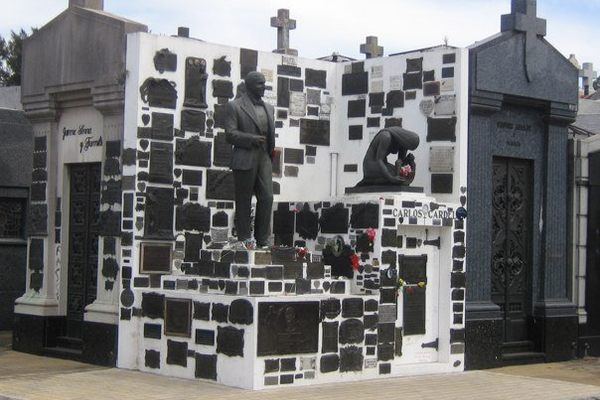

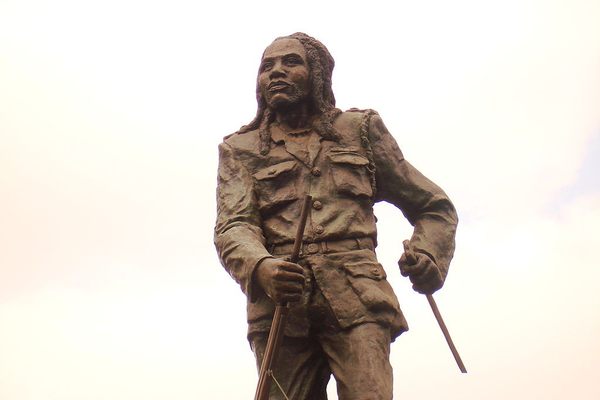
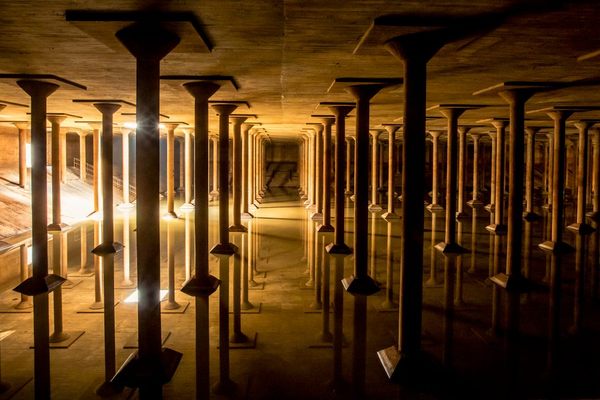


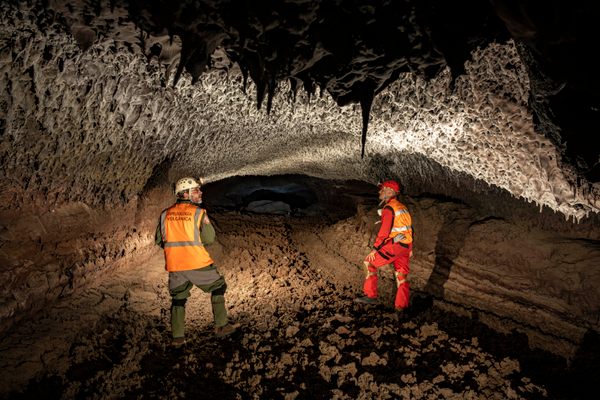
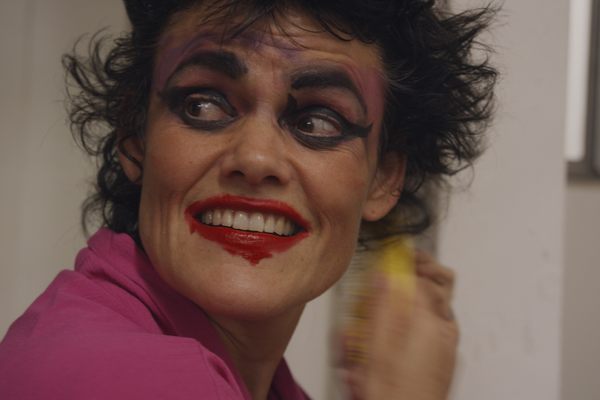






















Follow us on Twitter to get the latest on the world's hidden wonders.
Like us on Facebook to get the latest on the world's hidden wonders.
Follow us on Twitter Like us on Facebook